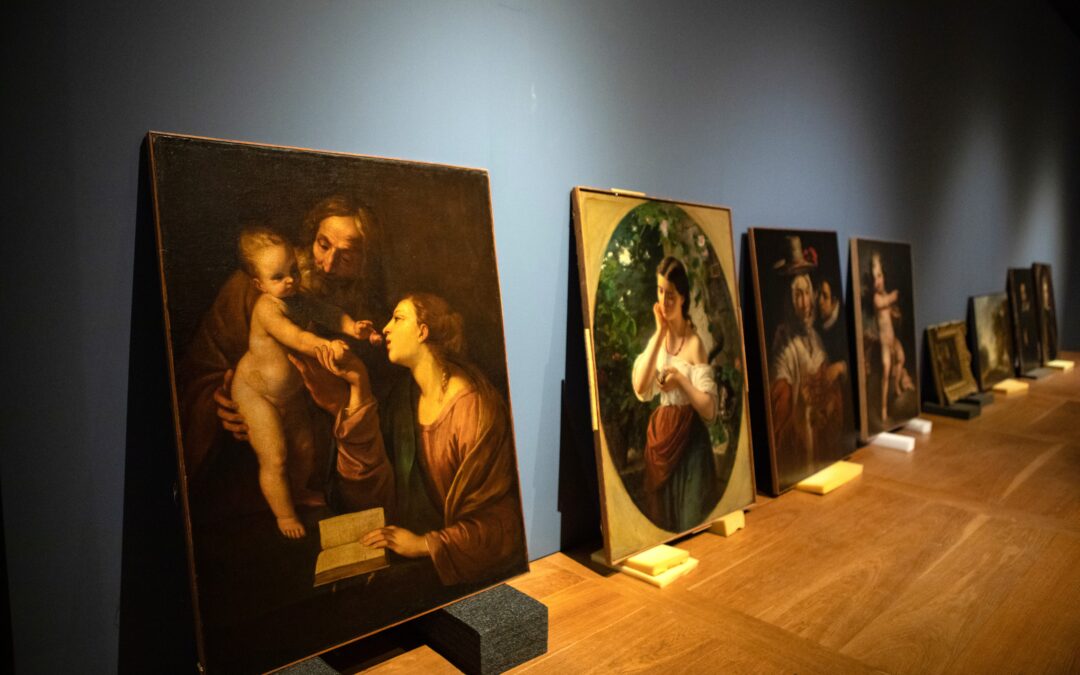Ukraine has transferred 38 works of art to Poland for safekeeping amid the war. Polish culture minister Piotr Gliński has thanked Kyiv for its “expression of trust” in sending the items to Warsaw, where they will be displayed at the city’s Royal Castle.
“Poland accepted Ukrainian refugees and now it accepts Ukrainian works of art,” he said at a ceremony yesterday unveiling the works, which are from the Khanenko Museum, which holds Ukraine’s largest art collection.
🇵🇱🤝🇺🇦 Wicepremier @PiotrGlinski w @Zamek_Krolewski w #Warszawa: Część wspaniałych kolekcji dzieł ukraińskich znajduje się w tej chwili w Polsce. To ukraińskie instytucje zwróciły się do Polski z prośbą o opiekę nad nimi. To wystawa 34 obrazów Jacka Malczewskiego z Lwowskiej… pic.twitter.com/0VQacW4AGn
— Ministerstwo Kultury i Dziedzictwa Narodowego (@kultura_gov_pl) May 18, 2023
They include paintings by major European Renaissance and Baroque figures, including Jacopo del Sellaio, Peter Paul Rubens, Guercino and Jacob Jordaens.
There is also a 1797 portrait of Polish King Stanisław II August by Élisabeth Louise Vigée Le Brun as well as a painting by Bernardo Bellotto, an Italian artist closely associated with Warsaw and who was recently the subject of an exhibition at the Royal Castle.
The decision to relocate the artworks was prompted last year when Russian artillery damaged the Khanenko Museum in Kyiv, said Gliński, who noted that 1,400 cultural institutions in Ukraine have suffered damage during the war, with a third of them completely destroyed
Bernardo Bellotto, alias Canaletto, painted vistas of Warsaw that were invaluable in its postwar reconstruction, writes Aleksandra Janiszewska-Cardone.
A new exhibition of the artist's works at @Zamek_Krolewski marks the 300th anniversary of his birthhttps://t.co/cgLEV18a6s
— Notes from Poland 🇵🇱 (@notesfrompoland) September 21, 2022
“We have accepted new refugees from Ukraine – this time they are works of art,” said Wojciech Fałkowski, director of the Royal Castle in Warsaw. “They are works from the top shelf of European art…[and] testimony to eastern European countries belonging to the same European civilization as the west of the continent.”
Fałkowski noted that, as well as being safeguarded, the items from Kyiv will also undergo conservation work in Warsaw. It is then planned to put them on display next year.
This is now the third time that Ukraine has sent art to Poland for safekeeping during the war. Previously paintings by Jacek Malczewski and sculptures by Johann Georg Pinsel have been relocated from Lviv to the National Museum in Poznań and Wawel Castle in Kraków respectively.
Street artists across Poland have used their spray cans and plenty of blue and yellow paint to denounce Putin’s war and express sympathy for the Ukrainian people, writes @derJamesJackson https://t.co/yFxEVePLYo
— Notes from Poland 🇵🇱 (@notesfrompoland) May 17, 2022
“Putin declared that there is no such thing as Ukrainian identity and culture, and he is therefore destroying Ukrainian cultural institutions,” said Gliński. “[But] it is thanks to the strength of [Ukrainian] identity and culture that Russia is losing the war.”
“The fact that we can show these works is an expression of the level of Polish-Ukrainian relations, it is an expression of trust,” continued the culture minister. “We haven’t had such a good climate for a long time.”
“Putin miscalculated. He wanted to destroy, but he built something good and beautiful, which is reflected in the fact that the Polish and non-Polish public will be able to admire these magnificent works of art at the Royal Castle in Warsaw,” concluded Gliński.
The Royal Castle is one of many Polish museums that are part of an initiative formed in March 2022 to assist Ukrainian cultural institutions during the war. The Komitet Pomocy Muzeom Ukrainy (Committee for Ukrainian Museums) helps to protect, hide, document and digitise their collections.
W miniony weekend na Ukrainę dotarł nasz pierwszy transport z artykułami do zabezpieczania zbiorów tamtejszych muzeów.
Materiały trafiły do Centrum Ocalenia Dziedzictwa Narodowego i Muzeum przyrodniczego we Lwowie, skąd zostaną przekazane do innych placówek na terenie Ukrainy 🇺🇦 pic.twitter.com/b1agReZp18— Komitet Pomocy Muzeom Ukrainy (@MuzeaUkrainie) March 28, 2022
Main image credit: Zamek Królewski

Anna Hackett is an assistant editor at Notes from Poland. She is a recent graduate of European Studies from Trinity College Dublin and has had previous journalistic experience with the Irish Independent News & Media group.



















